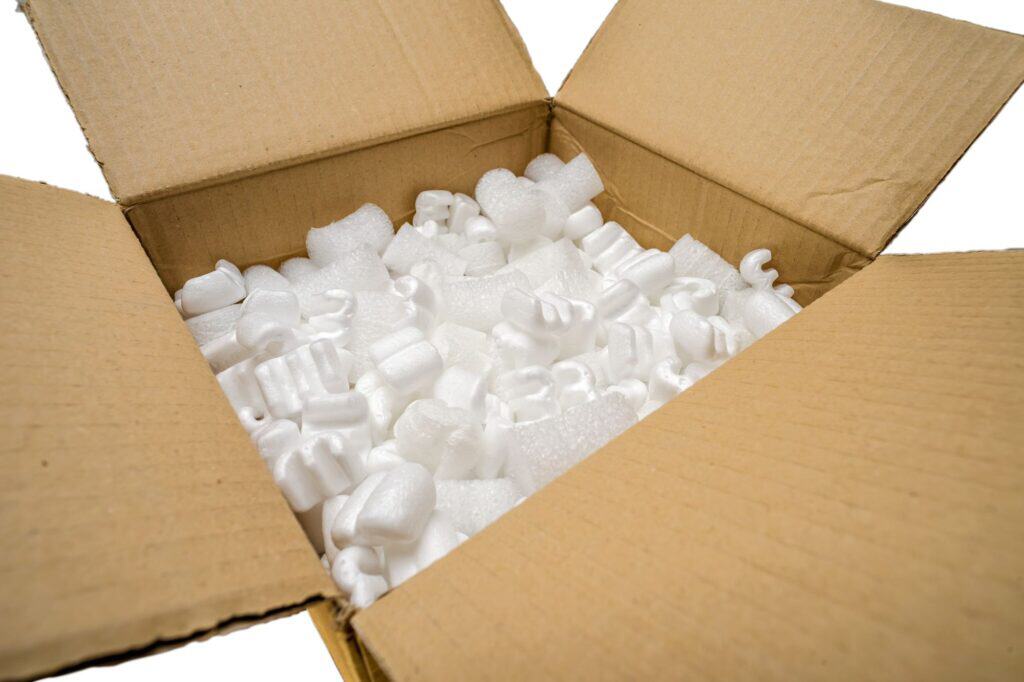When it’s time to transport IT equipment and electronics, the stakes are high and the margin for error is low. Knowing how to pack these items securely can mean the difference between a smooth transition and costly damage. This guide on ‘how to pack IT equipment and electronics’ will walk you through the essential steps to ensure your electronics are properly prepared, wrapped, and boxed for their journey. From the protection against physical shocks to the precautions for static electricity and temperature fluctuations, every aspect is covered to help you arrive at your destination with your digital life intact and ready to plug back in.
Key Takeaways
- Before packing IT equipment and electronics, it’s vital to back up all data, remove toner cartridges and batteries, label cables, and take photos of setups to facilitate reassembly.
- Use proper packing materials for secure transport, including bubble wrap for shock absorption, sturdy boxes to maintain structural integrity, and strong packing tape for securely sealing packages.
- Organise small accessories in clearly labelled bags, use anti-static materials to protect against electric charge, give ample acclimatisation time before reuse, and label all boxes for careful handling and efficient setup.
Preparing Your IT Equipment for Packing
Embarking on a journey with your electronic equipment begins long before the moving lorry arrives. Envision a future where you effortlessly reconnect your devices without the ghost of data loss haunting you. Creating a safety net for your most valuable digital assets starts with backing up all your data.
Dismantling your office printer without the messy surprise of toner spills requires removing toner cartridges and securing print heads, a practice that’s not just good, but necessary.
Now, picture yourself in your new space, effortlessly recreating your well-organised tech setup with the help of labels on cables and photographs of connections – a truly time-saving hack.
Selecting Appropriate Packing Materials
The quest for the perfect move is laden with choices, and the selection of packing materials stands paramount among them. Think of sturdy boxes and strong packing tape as the knights in shining armour for your electronic devices, as they offer the structural integrity needed to withstand the rigours of relocation.
Embrace the diversity of foams and bubble wraps, each playing a vital role in the safety of your electronic treasures. Choosing the right packing material is a cost-effective decision that provides additional cushioning to your items during transit.

Bubble Wrap for Shock Absorption
When it comes to packing electronics, bubble wrap is your trusty steed. It serves as a protective cocoon, absorbing shocks and jolts that occur as your items venture to their new destination. Envelop your electronics with the bubble side tenderly hugging each item, and secure this protective embrace with packing tape that doesn’t make direct contact with your precious cargo.
For smaller digital items, bubble wrap bags are an ideal choice – they’re ready-to-use and assure a snug fit and peace of mind.
Sturdy Boxes for Structural Integrity
The cardboard box – a simple yet critical vessel in the odyssey of your electronics. A sturdy box is the foundation of your packing strategy, providing unwavering protection against the chaos of transportation. A robust box, complemented by the filling of void spaces with packing peanuts, dispels the fear of a collapsing container by creating a fortress around your electronic devices.
A box filled with protective packing supplies is vital for a successful journey, as effective packing leaves no room for shifting items.
Strong Packing Tape for Secure Sealing
As you prepare to pack electronics for departure, the role of strong packing tape and packing paper becomes evident. It is the seal that guards the treasures within from the elements of dust and moisture that seek to tarnish your electronic items. Wrap each box with a tape as steadfast as your commitment to protection, focusing on seams and edges where the forces of stress converge.
This simple act is a pledge to keep all your electronics well protected throughout their voyage.
Organising Small Electronic Accessories
Imagine the dismay of arriving at your new abode only to find a Gordian knot of cables and accessories. Prevent such a scenario by organising all your small electronic accessories. Here’s how:
- Place remote controls, power cords, and chargers in their own clearly labelled bags, ensuring they’re ready for immediate use at your destination.
- Secure cables with the finesse of a sailor tying a ship to the dock, using rubber bands or zip ties.
- Stow them away in their tiny plastic sanctuaries, free from the perils of tangling.
RECOMMENDATION
Don’t overlook the batteries – these small but mighty powerhouses should be removed from devices and stored in durable, sealable bags, each clearly labelled to identify its contents.
Special Considerations for Fragile Electronics
Within the realm of electronics, some items bear the mark of fragility, demanding an extra measure of care. The original packaging, crafted by the manufacturer, is the noblest armour for these delicate warriors like printers and intricate devices. Should this protective shell be absent, a quest for original boxes from the manufacturer is well worth the effort, for they are designed to shield the specific electronic items as they brave the perils of transport.
Without such a sanctuary, the combined protection of bubble wrap and meticulous individual packing serve as the final defence against damage. Guard screens with the layered vigilance of:
- towels
- bubble wrap
- cardboard
- plastic sheeting
Ensuring that no blemish sullies their surface. And remember, the rule of solitude – one electronic device per box – to prevent tragic collisions and preserve tranquillity among your electronic items in the empty spaces.
Ensuring Safety Against Static and Temperatures

Static electricity and extreme temperatures pose unseen threats, capable of damaging your fragile electronics. To fend off these invisible forces, arm yourself with anti-static materials, creating a haven that nullifies the threat of a static ambush. Whether it’s the soft embrace of anti-static foam or the secure confines of a dissipative bag, these materials stand vigilant against the buildup of static charge, shielding sensitive components from unseen peril.
Avoid the risk of leakage or damage from high temperatures by removing batteries and storing them in separate resealable bags. And consider this – a climate-controlled environment for storage and transport is akin to a serene oasis in a desert of fluctuating conditions, preserving the integrity of your electronics.
Final Packing Steps for IT Equipment and Electronics
Once all the pieces are in place, your boxes of electronic equipment are prepared and ready for their journey. Here are the steps to follow:
- Heavier devices form a steadfast base.
- Lighter ones perch atop, secure from the crushing depths below.
- The chasms within the box are filled, leaving no room for the electronics to dance the dangerous dance of shifting during transport.
Once everything is properly placed, use strong packing tape to seal the boxes, ensuring their security and protection.
Labelling for Identification and Care
Treat each box as a treasure map, labelling them to guide careful handling and ensure they reach the correct destination. ‘Fragile – Electronics‘ – let these words be a beacon, guiding those who bear the weight of your electronic equipment to tread lightly and with respect.
The labels should speak the language of efficiency, listing not only the contents but also the room they are destined for, thus paving the way for a swift and seamless setup in your new space.
Acclimatisation Before Use
Once the journey is over, allow your electronic devices time to acclimatise. Let them breathe and adjust to the ambient temperature and humidity of their new home before inviting the electric current to flow once more.
This patience is a shield against the scourge of condensation that preys upon the vulnerable internals of your devices, ensuring they continue to serve you faithfully and without falter.
Summary
As the final chapter of our guide comes to a close, reflect upon the journey we’ve embarked on together. From the meticulous preparation of backing up data to the careful selection of packing materials, organising accessories, and safeguarding against static and temperatures, each step has been a stroke in the masterpiece of moving in Enfield. Carry these insights as your talisman, and may your electronics find their new abode unscathed, ready to power up your next chapter.
Frequently Asked Questions
What should I do if I don’t have the original packaging for my electronics?
If the original packaging is not available, you can contact the manufacturer for a replacement box or use bubble wrap and padded foam inserts to protect your electronics. It’s important to ensure the items are well-packed for safety during transit.
Can I pack multiple electronic devices in one box?
Yes, it is recommended to pack each electronic device in a separate box to prevent damage.
How should I protect my electronics from static electricity during a move?
To protect your electronics from static electricity during a move, use anti-static materials such as foam, bubble wrap, and bags to prevent damage to sensitive components.
Is it necessary to remove batteries from devices before packing?
Yes, it is essential to remove batteries from devices before packing, especially if there’s a risk of leakage or exposure to high temperatures. Pack them in separate resealable bags.
How long should I wait before using my electronics after a move?
Wait several hours for your electronics to acclimate to room temperature before using them to prevent condensation-related damage.







